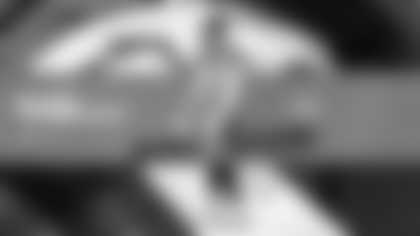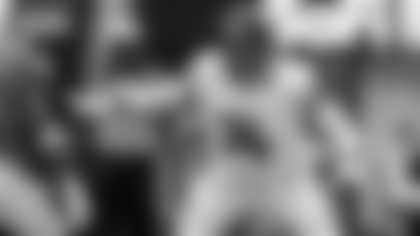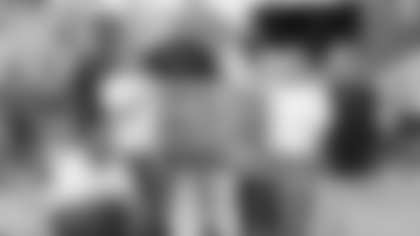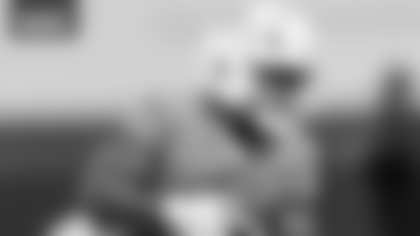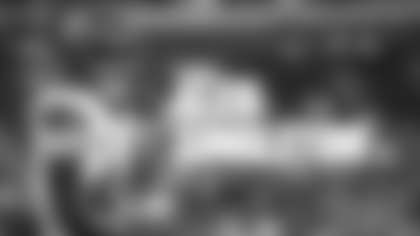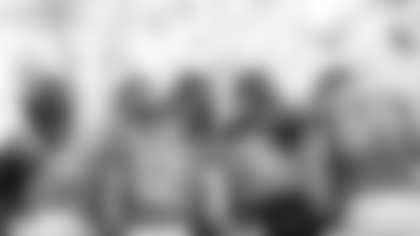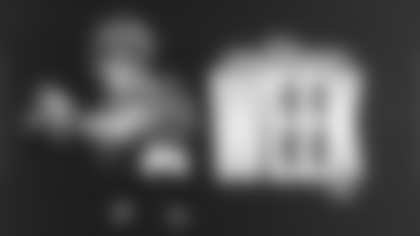Even the most unusual of circumstances for the NFL cannot dim the enthusiasm that Denver Broncos fans have for their first home game of a new season, with 2020 being the 61st year of pro football for the Broncos.
"Monday Night Football" is now five decades old and the Broncos will kick off the new season against the Tennessee Titans on Monday night.
Things sure are different now from those at the Broncos beginnings.
This is perhaps the first time that the attendance figure can be accurately guessed this far in advance. "Zero" seems to be the figure that will be typed into the official play by play form — a figure that by the way does not impact the sellout streak for Denver home games.
If no fans are allowed, the game cannot be a "non-sellout."
Similarly, if an estimated 5,700 fans are allowed for the Tampa Bay game, as has been announced, then if 5,700 tickets are distributed, which is to be anticipated, that game too will maintain sellout status.
But back to opening night.
Playing before no fans will be just 18,372 fewer than the announced crowd for the Broncos' first home game back in 1960. Back in those days, the home venue was Bears Stadium (named for the minor league baseball team that had been its occupant since 1948), which was a largely wooden structure.
It actually seated just over 34,000 including the newly constructed south stands — the east stands were made of wood and was a temporary structure put up for football and taken down at the end of each Broncos season.
The Broncos' first home game came after an unheard of total of eight straight on the road, five preseason (then called exhibition) games at such diverse locales as Providence, Rhode Island, Rochester, New York, and Little Rock, Arkansas, and then the first three regular-season games were played on the road because the Triple-A Denver Bears still had use of "their" stadium until the minor league baseball season had concluded.
In 1960, Denver had no major league franchises in baseball, basketball or hockey, and there was curious interest in the new pro football team.
That crowd of 18,372 actually was in line with the better crowds that American Football League teams had in that first year, and the fans had no idea what to expect.
The uniforms, of course, were not the spiffy orange and blue for which the Broncos are now known, but were literally used and in the colors mustard and brown — with vertically striped socks to complete the fashion nightmare.
But even at that, fans saw six historical figures on the two rosters.
That Broncos team featured four players who would be future Denver Ring of Famers: quarterback Frank Tripucka, safety Austin "Goose" Gonsoulin, halfback/kicker Gene Mingo and receiver Lionel Taylor.
Tripucka had joined the Broncos as a quarterback coach but was coerced into playing a last hurrah that lasted four years. In 1960, he became one of the first quarterbacks in history to pass for 3,000 yards in a single season.
On that opening day, he completed 9-of-19 passes for two touchdowns as the Broncos defeated the Oakland Raiders 31-14 getting off to a surprising 3-1 start.
It would not last, but what the heck. The futility of Denver's first 13 years is well documented.
Tripucka threw mostly to Taylor, who caught seven of The Tripper's nine completions for 101 yards and both touchdowns.
Taylor was just two weeks removed from having been cut as a linebacker by the Chicago Bears, and he was to set a pro football record of 92 receptions in 1960. A record, by the way, that Taylor himself broke with 100 receptions in 1962.
He recently was named by the AFL "Call for the Hall" committee (of which I was a member) as one of the 10 greatest AFL players not yet in the Pro Football Hall of Fame.
Fans also saw Goose Gonsoulin at safety for the Broncos that day. Gonsoulin was the first player ever acquired by the Broncos in a trade. Both Gonsoulin, who finished the year with 11 interceptions, and Taylor were named by The Sporting News to the All-AFL team at season's end.
Fans that day also watched the first Black placekicker in pro football history, as the versatile Gene Mingo scored seven points on a field goal and four extra points for Denver.
Mingo had come to the Broncos after playing service ball during his time in the United States Navy, a feat that likely will never be repeated in this modern era of football.
Not to be outdone, Oakland had some great players too. Fans that day saw not one but two future members of the Pro Football Hall of Fame for the Raiders.
Center Jim Otto started that first Broncos game ever in Denver, and for Otto it was just a small part of an incredible streak.
Jim Otto played 15 seasons for the Raiders and started every game for that decade and a half, also starting 13 playoff games along the way to his spot in the Hall of Fame. He was an ironman and as tough as they came, wearing one of the most unusual uniform numbers in history: 00. As in his name, Otto.
That game was definitely historical, and no one went on to a better career than the starting quarterback for Oakland, Tom Flores, who just a few weeks ago was named a finalist for the Pro Football Hall of Fame's Class of 2021.
He started for the Raiders that day, completing 10-of-15 passes for 124 yards and rushing for 78 more. But that day in a minor league baseball park in Denver was just the beginning.
Flores became the only Hispanic head coach to win the Super Bowl when he coached the Raiders to two world championships — which total three overall for Flores, as he had been a backup quarterback for the Kansas City Chiefs when they won Super Bowl IV.
He also coached the Seattle Seahawks, then was a member of the Raiders' radio crew until just the last couple of years.
I got to know him during his coaching career in Oakland and Seattle, and as a broadcaster for the Silver and Black, and he is a classy gentleman who is completely humble about his many accomplishments.
So that first home game for the Denver Broncos might seem just like some statistics from time gone by, and not only did Denver win the game, establishing a foundation of victory for our home fans, but those in attendance saw the beginnings of history by a number of players.
As is often the case, we do not know what we are watching until the future writes its history.
And so the Broncos will take into this season's opening game a roster of players eager to make their marks, or add to them, under the bright lights of "Monday Night Football."






